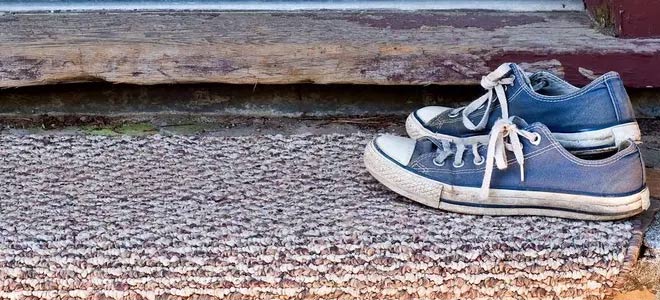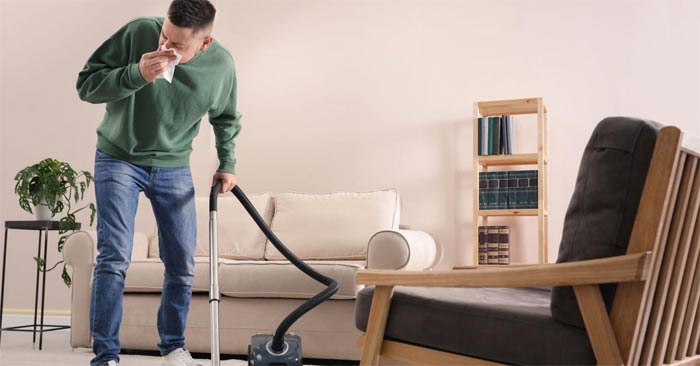How to Allergy-Proof Your Home
Runny noses, coughing, itchy eyes, and sneezing are all side effects of the pesky allergy, and many people suffer from them year after year, season after season. While allergies can't be completely avoided, there are ways to reduce the symptoms. Here's how to allergy-proof your home from the inside out to minimize your symptoms.
Before understanding how to reduce allergens , it's important to understand what common household allergens are. Allergens are substances that are foreign to the body and cause allergies in some people. They're everywhere: indoors, outdoors—in fact, everywhere we go! Examples of household allergens include dust mites, cat or dog dander, houseplants, cockroaches, and even some fabrics.
Tips for preventing allergies in the home
Clean air
A well-ventilated home and leak-free ductwork are important steps to reducing indoor allergens. Use a high-efficiency particulate air (HEPA) filter in your air conditioning system and keep indoor humidity around 50 percent. Since mold loves moisture, you definitely don't want to keep the air in your home too moist.
Another way to keep the air in your home clean is to keep your windows closed, especially between 10am and 3pm, when it's windiest, causing pollen to drift into the air.
Dust reduction
Dust is an allergen that can cause a number of problems, so reducing the amount of dust in your home will make your experience much more pleasant. Carpets and other fabrics trap dust. If possible, use washable, pull-up rugs that allow you to mop the floor and remove dust regularly. Vacuum and dust your furniture and wash your curtains regularly to reduce the amount of dust in the air.
Clean up
Allergens tend to cling to our belongings, such as in piles of clothes, on paper or fabric, etc. Therefore, regular cleaning will take away the space for allergens to exist in your home. Don't keep old decorations, magazines or other items around that do nothing but collect dust and take up space in your home.

Anti-allergy outside the home
The outdoors is filled with a variety of allergens that can irritate a person's senses. These include pollen, grass, and mold—all of which spike, especially in the spring. Allergy-proofing the outside of your home may seem like a more daunting task, but there are ways to do it.
Smart garden arrangement
Gardens are great, but the plants and flowers that grow in them produce a lot of pollen, which is an allergen that irritates many people. Place your garden strategically to ensure that it is not too close to a window, allowing these particles to drift in and aggravate your allergy symptoms.

Use a doormat
Allergens are often brought into the home from outside. To prevent this from happening, place doormats outside each entrance to your home. Ask all family members and guests to wipe their feet thoroughly before entering the home to prevent outdoor allergens from entering the home.
Avoid drying clothes
Hanging clotheslines is a great alternative to using a dryer: they use less energy, are simple in design, and are efficient! However, with pollen and mold spores in the air, you don't want your clothes hanging outside to collect them. Hanging clothes outside to dry can make allergies worse, so you should avoid this.
It may not be possible to avoid allergies completely, but following the tips above will definitely help reduce your risk of runny noses, sneezing, and itchy eyes if you have sensitive skin.
You should read it
- Infection in childhood can increase the risk of celiac disease
- Homemade anti-theft horn simple and effective for the house
- Which dispenser has a anti-shock function for the family?
- 7 best anti-theft apps to protect Android device
- Top best antivirus application for Android phones
- 13 interesting facts in life not everyone knows

 How to Use the Dark Web Without Doing Anything Illegal
How to Use the Dark Web Without Doing Anything Illegal Basic principles of using Gen AI
Basic principles of using Gen AI Principles for Responsible Use of AI Everyone Should Know
Principles for Responsible Use of AI Everyone Should Know Take Samsung's latest safety warning seriously!
Take Samsung's latest safety warning seriously! Why think twice before buying a lifetime VPN plan?
Why think twice before buying a lifetime VPN plan? PocketPal AI
PocketPal AI